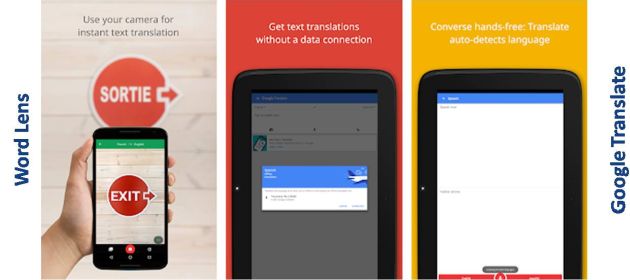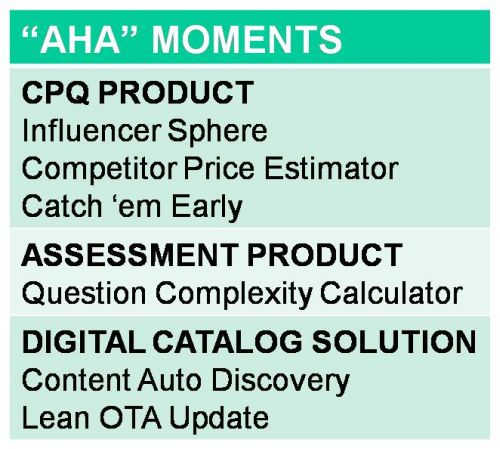One of the chief ways in which we help software companies is by introducing “aha” moments in their new products.
It’s almost not necessary to define “aha” moments. The term is quite self-explanatory. We see them all around us.
A few “aha” moments that come readily to my mind are:
 Google Assistant: Google Assistant is an artificial intelligence-powered virtual assistant developed by Google that is available on mobile and smart home devices. I literally stumbled on to the mobile version of this product when I loooong tapped the home button on my Samsung Galaxy smartphone.
Google Assistant: Google Assistant is an artificial intelligence-powered virtual assistant developed by Google that is available on mobile and smart home devices. I literally stumbled on to the mobile version of this product when I loooong tapped the home button on my Samsung Galaxy smartphone.
Suddenly, Google Assistant popped up and asked me to activate it.
20 years ago, I used to sell a voice recognition product. Called “dragon fly” or something like that, it was very sensitive to different accents and ambient noise. To train the product, we had to read a full page of text. After all that, it had an accuracy of barely 60-70%. Long story short, 19 years ago, I no longer used to sell this product.
Going by that experience, I was bracing myself to read a long passage of text to train Google Assistant. So you can imagine my shock when I found out that all the product required was to repeat the phrase “OK Google” thrice! That’s it!! Over the last 5-6 months of using Google Assistant, I’ve found it to be accurate more than 90% of the times.
WhatsApp for Web: I’m sure we’ve all had an “aha” moment when we onboarded WhatsApp for Web by simply scanning a QR code displayed on the laptop with the app on our smartphones.
WordLens: This mobile app provides a nifty translation of signs in multiple languages. You expect it to work the way most Augmented Reality apps work: Click a pic, submit it, await the results via text or PUSH notification after a few seconds or minutes.
Acquired by Google and bundled into Google Translate, WordLens carries out the translation in situ: The English words pop up instantly in place of the foreign words while you’re still viewing the sign! It’s a mindblowing experience that has to be seen to be believed. I strongly recommend that you download and try it.
It’s not just consumer apps. “aha” moment is also a thing in enterprise software.
We’ve introduced “aha” moments in many B2B software products. The following exhibit provides a partial list.
CPQ Influencer Sphere
We spec’ced Influencer Sphere for a new Configure-Price-Quote product to be developed by a midsized IT company. Gartner describes the CPQ category as follows:
Configure, price and quote (CPQ) application suites provide an integrated set of software applications supporting the configuration, pricing and quote generation activities that accompany solution and negotiated selling. CPQ application suites are also deployed to support self-service sales environments, including business-to-consumer (B2C) and B2B sales environments. CPQ systems typically include pricing engines, proposal generators, quoting systems, and rules or constraint engines, and are complemented by approval and authorization workflows.
CPQ is used widely in automobile, computer hardware and other industries that sell highly configurable products.
The existing crop of CPQ products was built prior to the social selling era. They did a great job of helping a salesperson to configure his company’s product, price it, discount it, convert to a proposal, and submit it to the prospect who requested it.
Our customer’s CPQ was late to market but was conceptualized and developed in the social selling era. We wanted our product to do more than just prepare a quote. We looked for ways to leverage social selling in this endeavor, which would play our competitors’ legacy baggage against themselves.
From our sales experience, we knew that a contact given in a typical RFP is more of an admin person who receives proposals from multiple vendors, collates them, prepares a comparison table and forwards it to the committee of decision makers. We were also aware that influencers and decision makers are rarely exposed in the RFP document. Top performing sales people know that finding and mapping them on time is often the key to winning deals.
We wanted our software to empower all sales reps to be like top performers.
Influencer Sphere was the result.
Using information from social media, our software would identify all influencers and decision makers for a given deal. It would then unravel the web of connections between them and colleagues of the sales rep. By doing so, it would help sales to map the prospect organization faster and get warm introductions to influencers and decision makers from their own coworkers. This would naturally boost their chances of winning the deal.
Influencer Sphere helped us position our CPQ product as “sales booster” and accordingly differentiate it from incumbents whose products merely helped prepare quotations but did nothing to drive more sales.
By providing pleasant surprises that drastically enhance the product experience, “aha” moments help software companies to outflank incumbents.
Along the way, “aha” moments also help software product startups overcome the MVP Conundrum highlighted in our post titled Why Do Companies Outsource Product Management?.
Creating “aha” moments is not easy but, without them, software companies won’t stand a chance against incumbents and will likely fade away into the sunset as “yet another” failed product.

